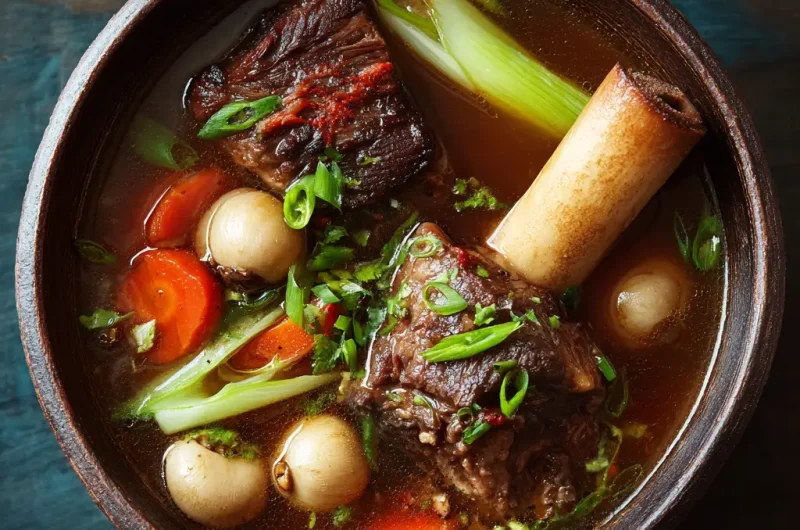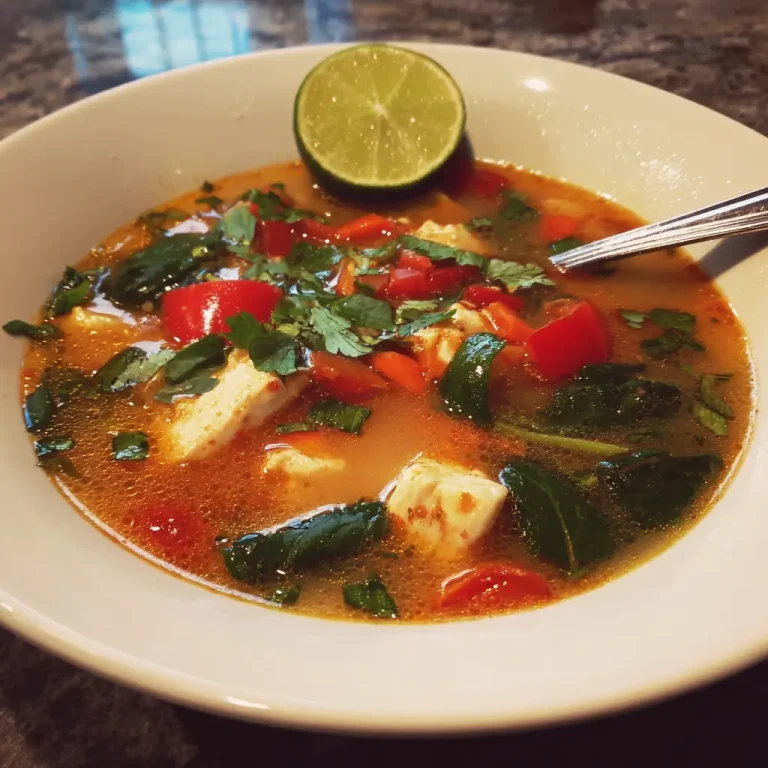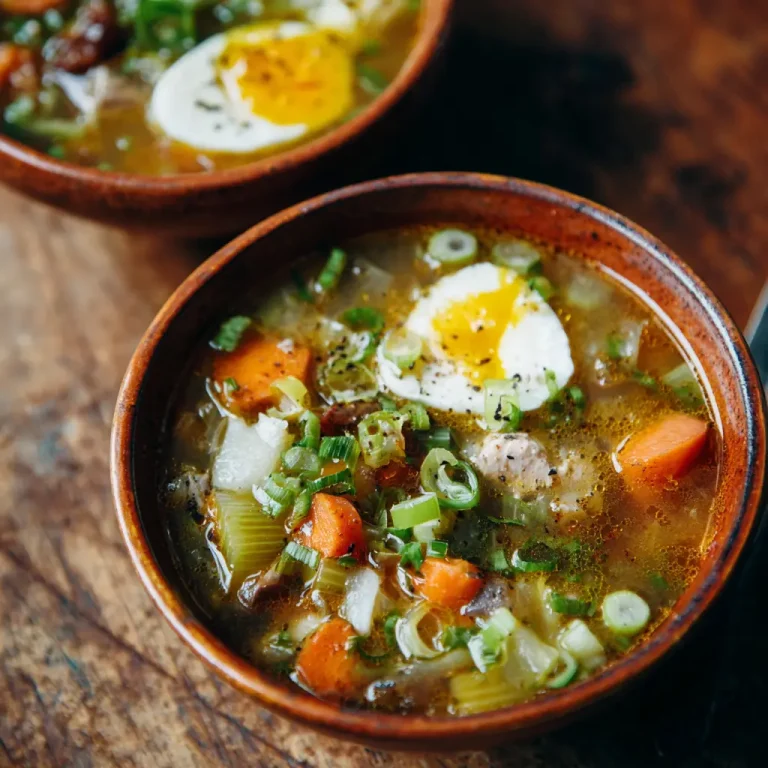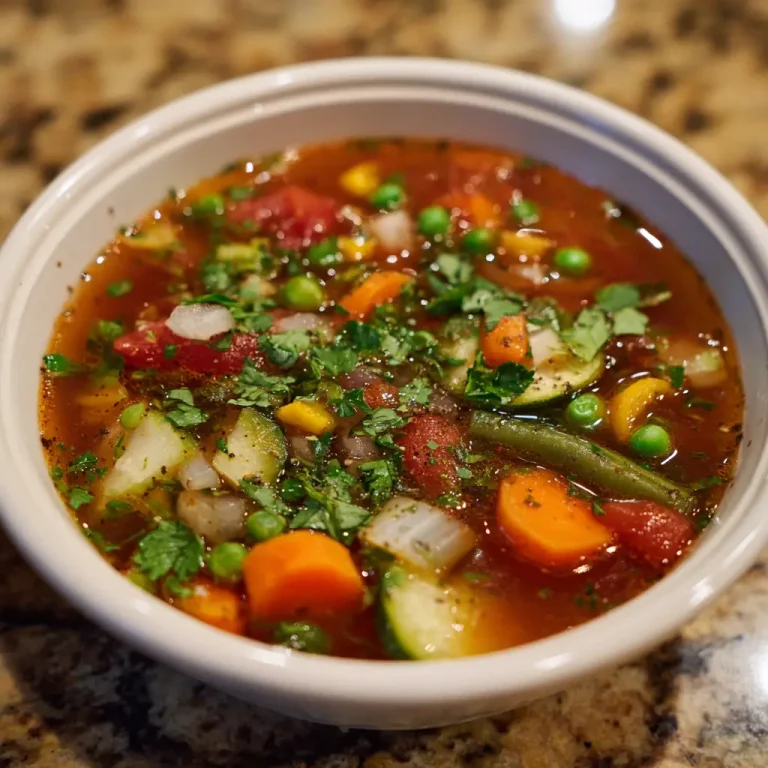Beef Soup Bone Recipes – Rich, Flavorful, and Nourishing Homemade Soup Guide
Introduction
Meals made from beef soup bones carry a kind of warmth and soul that few other dishes rival. When simmered slowly, those bones release deep savory flavor, gelatin, and minerals, turning plain water into a soothing, nourishing broth. Many people think of bone broth as a health tonic, but when transformed into a full soup, it becomes a satisfying meal.
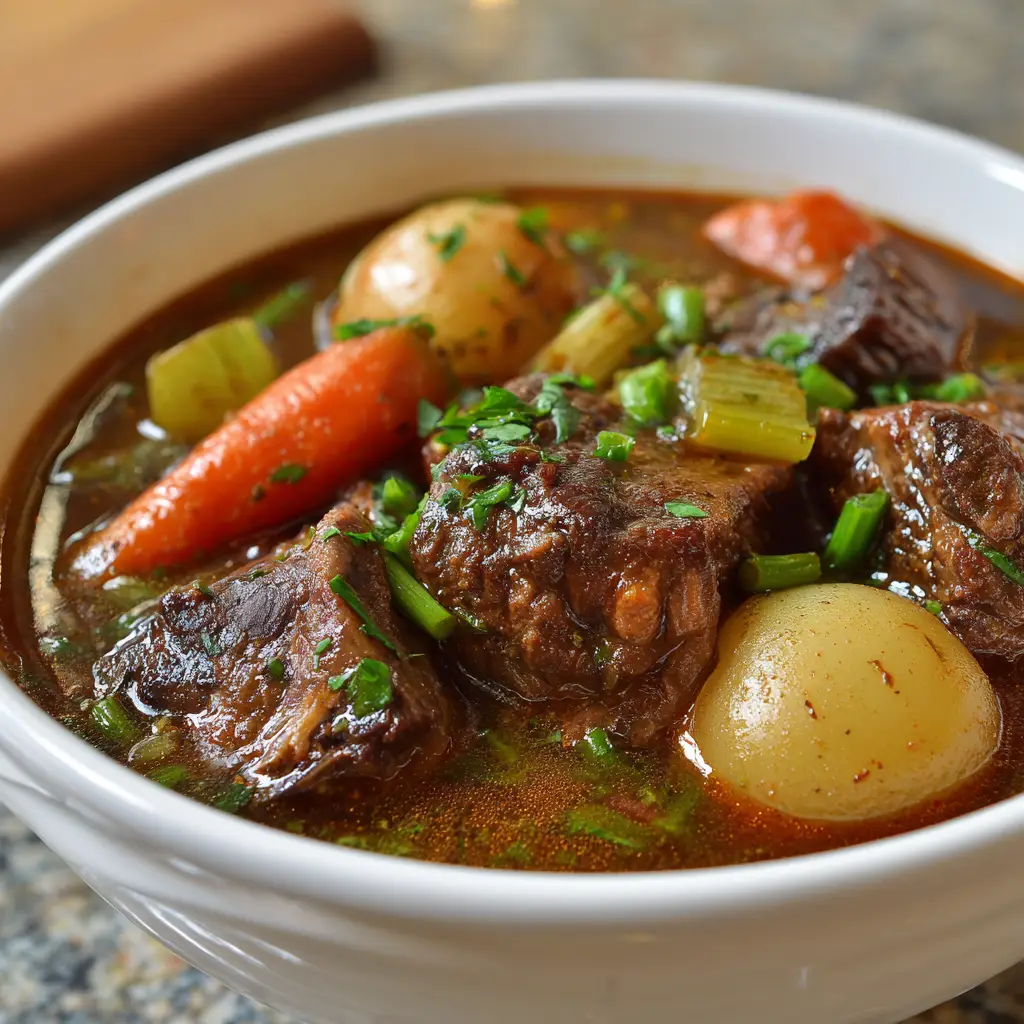
Here I share a beef soup bone recipe built on technique and flexibility. You can use it as a base or enjoy it on its own. You will learn how to coax rich extracts of flavor from marrow, cartilage, and meat, and how to season and adapt the soup to your taste. The goal is a bowl that comforts your body, delights your palate, and makes even bone scraps feel like gold in the kitchen.
Ingredients Needed
Here is a typical ingredient list for one batch (makes about 6 to 8 hearty servings). Below the list is a rough calorie estimate per ingredient. Note these calorie numbers are approximations.
| Ingredient | Approximate Amount | Estimated Calories* |
|---|---|---|
| Beef soup bones (knuckle, marrow, neck) | 1.5 kg | ~240 kcal (bones alone very low, marrow adds) |
| Beef meat (on or off bone) | 300 g | ~600 kcal |
| Carrot, chopped | 2 medium | ~50 kcal |
| Celery stalks, chopped | 2 stalks | ~20 kcal |
| Onion, quartered | 1 large | ~45 kcal |
| Garlic cloves, smashed | 4 cloves | ~20 kcal |
| Tomato, halved | 1 medium | ~25 kcal |
| Bay leaves | 2 leaves | negligible |
| Black peppercorns | 1 tsp | ~6 kcal |
| Fresh parsley or herbs (optional) | handful | ~5 kcal |
| Salt | to taste | 0 kcal |
| Cold water | enough to cover (≈ 3 to 4 liters) | 0 kcal |
*Calories are approximate, for guidance only. The broth itself will contribute fewer calories once strained and fat skimmed.
When you serve soup, adding vegetables, noodles, or meat will change the total calories.
Step-by-Step Cooking Instructions
- Prepare bones and roast (optional but recommended).
Preheat oven to 200 °C (about 400 °F). Lay bones (and any meaty pieces) on a roasting pan. Roast for 30 to 40 minutes, turning once, until well browned. This step encourages Maillard reactions, deepening both flavor and color. - Transfer to stockpot, deglaze.
Place the roasted bones into a large stockpot. Use a little hot water to deglaze the roasting pan, scraping up browned bits, and pour that into the pot too. These bits carry flavor. - Add aromatics and cold water.
Add onion, garlic, carrot, celery, tomato, herbs, peppercorns, and bay leaves. Then pour in cold water until the bones and ingredients are covered by about 2 cm (or enough to ensure full immersion). - Gently bring to simmer, skim foam.
Slowly heat until just below boiling—when it begins to steam and small bubbles appear. Avoid vigorous rolling boil. As it heats, skim off any foam or scum that rises to surface with a spoon or ladle.For more insights on this topic and Cabbage Soup Diet, make sure to check out our other recipe. - Simmer long and slow.
Reduce heat so the broth barely simmers. Let it cook for at least 6 hours, better 8 to 12 hours if time allows. The long gentle simmer helps draw minerals and gelatin from bones. Cover partly to reduce evaporation but allow some steam escape. - Check periodically.
Occasionally, re-skim, and top up with a little water if level falls too low. Stir gently to avoid disturbing sediment. - Remove solids and strain.
After desired time, turn off heat. Remove the large bones and vegetables. Strain the broth through a fine mesh or cheesecloth into a clean pot or bowl. - Chill and degrease (optional but useful).
Let the broth cool, ideally in the fridge. Fat will congeal at top; skim it off if you prefer a lighter broth. What remains is the rich, clear (or slightly translucent) broth. - Add meat, vegetables, noodles (optional).
If you reserved meat pieces, return them now. You may also add cooked vegetables or pasta at this stage, simmer briefly to heat through. - Season and serve.
Add salt, freshly ground pepper, and fresh herbs to taste. Serve hot.

Tips for Customizing the Recipe
- Use a mix of bones: marrow bones, knuckles, neck bones and ribs help balance gelatin, flavor, and mineral content.
- Vegetable choices are flexible: add mushrooms, leeks, parsnip, or whatever seasonal produce you prefer.
- Spice it up by adding a bit of crushed ginger, a dash of soy sauce, or a splash of fish sauce for umami.
- Acid helps extraction: a teaspoon or two of apple cider vinegar or lemon juice early in simmering can help draw minerals out from the bone.
- Control the fat: if too oily, chill and remove solid fat or strain through paper towel.
- Pressure cook adaptation: if short on time, use a pressure cooker and cook bones under high pressure for 1 to 2 hours, then release naturally.
- Add noodles or grains like barley or brown rice for heartiness.
- Use leftover bones reusefully: after first round, you might use the same bones for a weaker second stock, or add to stews.
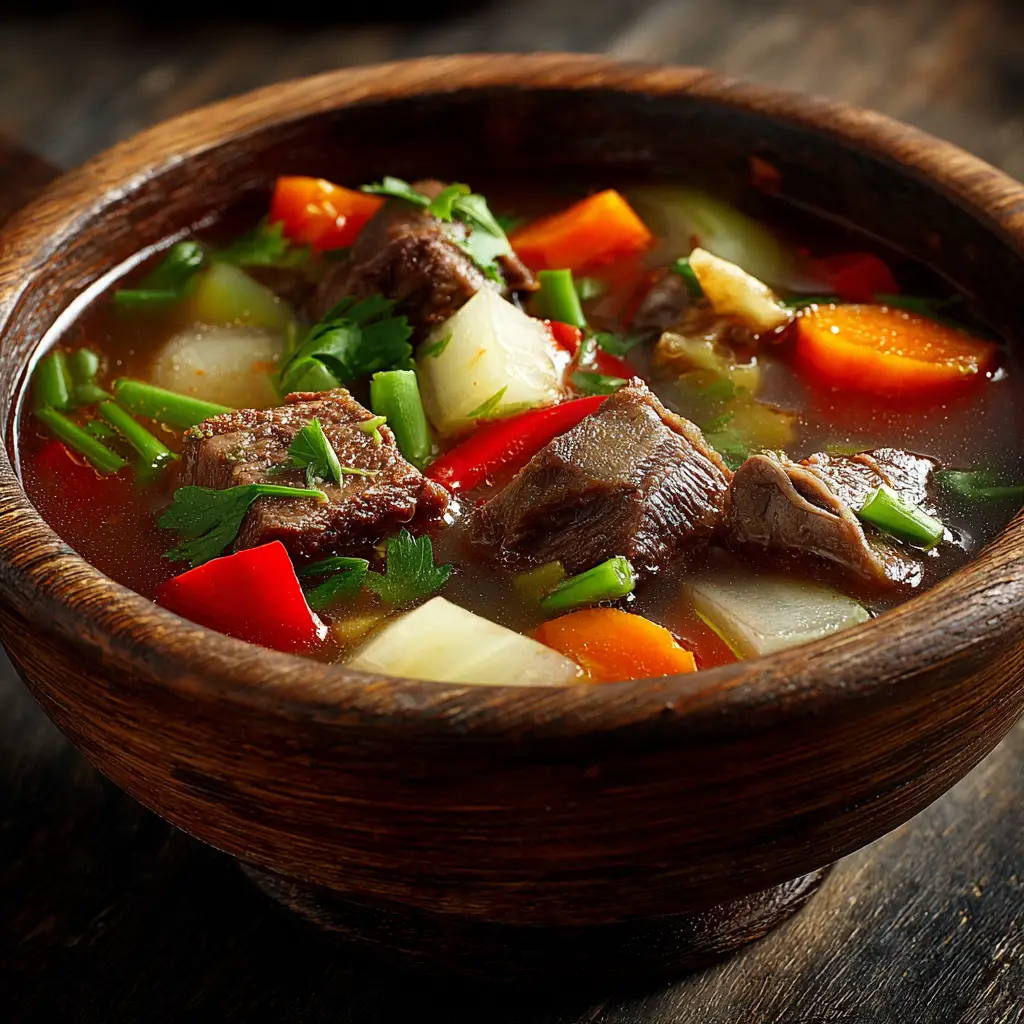
Nutritional Information
The nutritional profile of bone soup depends heavily on how much meat, fat, and vegetables you include. Here is a rough estimate for one bowl (≈ 300 ml) of strained beef bone soup (without extra vegetables or noodles):
Because the broth is mostly water infused with collagen, minerals, and small bits of protein, it tends to be very low in calories when served plain. Additions like meat, noodles, vegetables, or fats can change it dramatically. Modern commentary notes that bone broths offer amino acids and minerals but should not be thought of as miracle cure-alls.
Serving Suggestions
- Serve in a deep bowl, garnished with chopped parsley or coriander, a drizzle of extra virgin olive oil, and cracked black pepper.
- Accompany with crusty bread, garlic toast, or chapati to make it more filling.
- Add steamed greens (spinach, kale) or soft vegetables (zucchini, carrots) for extra nutrition and color.
- Stir in cooked rice, noodles, or barley just before serving to soak up flavor.
- For a richer meal, top with shredded beef or cubes of cooked beef, or even bone marrow pieces.
- Serve with a wedge of lemon or a dash of hot sauce for brightness.
- In colder weather, pair with pickles or a sharp salad to balance the richness.
Beef Soup Bone Recipes – Rich, Flavorful, and Nourishing Homemade Soup Guide
Course: Blog8
servings20
minutes8
minutes70
kcalIngredients
1.5 kg beef soup bones (marrow, knuckle, or neck)
300 g beef meat (optional, adds richness)
2 medium carrots, chopped
2 celery stalks, chopped
1 large onion, quartered
4 garlic cloves, smashed
1 medium tomato, halved
2 bay leaves
Directions
- Roast the bones:
- Preheat oven to 200 °C (400 °F). Place bones and any meaty pieces on a baking tray. Roast for 30 to 40 minutes, turning once, until browned. This adds rich flavor and color.
- Transfer to pot:
- Move roasted bones to a large stockpot. Pour a little hot water into the tray, scrape browned bits, and add that liquid to the pot.
- Add aromatics:
- Add onion, garlic, carrot, celery, tomato, bay leaves, peppercorns, and vinegar (if using). Pour cold water until everything is fully covered.
Recipe Video
Notes
- Roasting the bones before simmering creates deeper, more complex flavor.
Add a teaspoon of vinegar or lemon juice at the start to help extract minerals from the bones.
For a quicker method, use a pressure cooker and cook for 90 minutes instead of 8 hours.
Frequently Asked Questions
Q: Do I have to roast the bones first?
Not strictly, but roasting deepens flavor and improves color. Skipping that step gives a paler, less complex broth.
Q: How long should the soup simmer?
Aim for at least 6 hours. For best flavor and nutrient extraction, 8 to 12 hours works well. If using a pressure cooker, 1 to 2 hours under high pressure is possible.
Q: Can I reuse the bones for a second soup batch?
Yes, though the second batch will be weaker. You might use it in stews, rice, or soups where flavor demand is lower.
Q: How do I reduce the fat or greasiness?
After chilling, skim off firm fat. You can also use a fat separator or ladle carefully from beneath the surface.
Q: Is bone soup good for health?
It can supply minerals, amino acids, and collagen fragments. But it is not a substitute for balanced protein, vegetables, or other nutrients. Use it as a supporting dish, not a cure.
Q: Can I freeze the broth?
Yes. Use airtight containers or freezer bags and freeze for up to three months. Thaw gently and separate fat before heating if desired.
Conclusion
Beef soup bone recipes offer both comfort and depth. With patient simmering and careful seasoning, even humble scraps become a luxurious, nourishing bowl of goodness. You can adapt the recipe to your tastes, add vegetables or grains, and use it as a base for other dishes. The mild broth, enriched with collagen and minerals, contributes to well rounded meals without overwhelming flavor. May your kitchen fill with rich aroma and your table with satisfying bowls of warmth.


